After spending three hours putting lettuce seed on the Army Float, this editor was curious to see the completely decorated float. I had trouble seeing it on television.
My float decorating companion, Margot Mandell, wrote “none of the main channels showed ‘our’ float in the parade. . . meaning they went to commercial. My brother sent a screen shot.”
This editor sent a message to past Ronald Reagan American Legion Post 283 Commander Jim Cragg and he wrote that he had just returned from the Rose Bowl Game and watched the recorded videos of the NBC and ABC Rose Parade shows.
“I was tremendously dismayed to see that the 250-year anniversary celebratory float was not shown on NBC! The float showcased some amazing servicemen and women for their heroism and hard work in service to our nation. It says something bad about our media if they prioritize entertainers over those who serve.”
Another person said “Sadly the network I was watching cut away from the float. Coverage of people in the crowd and the inane things the announcers say seem to be more important.”
Cragg said that on ABC, they did show “the Army float and “personnel in all its grandeur.”
He learned about the float, the first that the Army would ever have in the Rose Parade through Army Public Affairs. “When they said they needed help, I jumped at the opportunity to share with the Post and community,” he said.
“When I moved to LA in 1984, my church group went down and decorated a float, and while it seemed lame as a 14-year-old, it actually made me feel connected to Southern California and I’ve enjoyed the parade ever since.”
He said he wanted to bring his daughter down to experience decorating. “Unfortunately, this was a one-time thing with the Army since it is celebrating the 250-year anniversary, but I’m hoping we can find a way for the Legion and community to volunteer on random floats in the future since it got such a great response.”
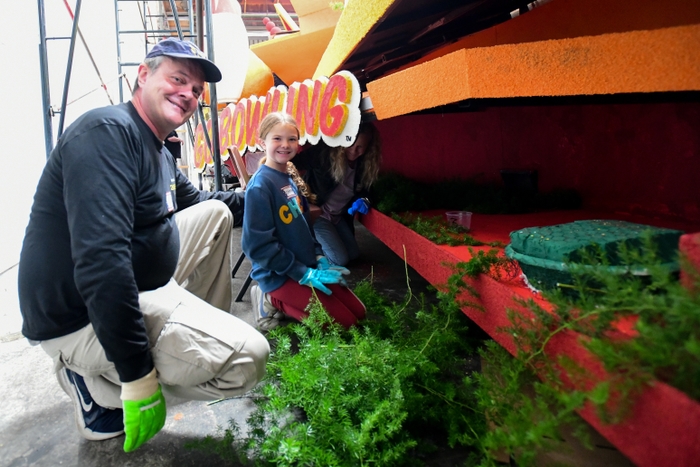
Past 283 Legion Commander Jim Cragg with his daughter decorating a Rose Bowl float
Photo: RICH SCHMITT
Cragg said his daughter not only got to paste flowers and seeds on a float, but also got to meet Army Captain Sammy Sullivan. “She took the time to talk with my daughter, and even let her wear her Olympic bronze medal. She is an outstanding role model for young girls in sports.”
Sullivan, a forward on the U.S. Rugby team, helped beat Australia 14-12 to win a bronze medal at the 2024 Paris Olympics.
In an August press release, Sullivan, who is an engineer officer and remote athlete at the Chula Vista Elite Athlete Training Center in Chula Vista, said, “Leading into (the 2028 Los Angeles Summer Games), our ultimate goal is going to be winning gold in front of the home crowd. I’m just going to continue to grow the game and continue to share my story as a Soldier leading up to the next Olympics.” She was one of the soldier-athletes riding on the float.
The Army float, “This we’ll Defend: 250 Years of Service,” was designed by John Ramirez of Artistic Entertainment Services, and included figures of those who have defended this country. “This We’ll Defend” was first used as a battle cry by the Continental Army.
- 1775– Gen. George Washington, commander in chief of the Continental Army and the first president of the United States
- 1778– Molly Pitcher, a nickname given to Mary Ludwig Hays for her bravery and commitment to delivering water to Soldiers on the battlefield during the Revolutionary War
- 1861– Col. Robert Shaw, abolitionist and commander of the 54th Massachusetts Regiment, the Army’s first African American regiment
- 1898– Maj. Walter Reed, a member of the Army Medical Corps whose work in epidemiology and pathology developed critical preventative measures for yellow fever
- 1918– Pfc. Joseph Oklahombi, one of 19 Choctaw Soldiers who used their native language as a code to securely pass information during World War I
- 1941– Charles “Chief” Anderson, Tuskegee Airmen Ground Commander who trained 1,000 Airmen that flew over 15,000 missions and earned 3 Distinguished Unit Citations, 8 Purple Hearts, 14 Bronze Stars, and 96 Distinguished Flying Crosses
- 1965– Lt. Col. Harold “Hal” Moore Jr., whose experiences in Vietnam inspired his novel-turned-film “We Were Soldiers Once and Young,” and is the namesake of Fort Moore in Georgia (retired as lieutenant general)
- 2007– Staff Sgt. Joseph Murtaugh, who served on 11 combat deployments and saved the life of an 8-year-old girl in Iraq with a life-threatening heart defect that set the stage for an Army program that connects charities and corporations to children’s health cases (retired as a master sergeant)
- 2025– Staff Sgt. Daisy Balbuena, a first-generation American, native Californian, and unmanned aircraft systems operator whose passion for STEM embodies the Army’s bright future and continued modernization
The figures were all decorated with seeds, an exceptionally time-consuming process, and not nearly as beautiful as working with flowers. First glue, must be applied evenly, and then seeds brushed onto the glue with a sponge.

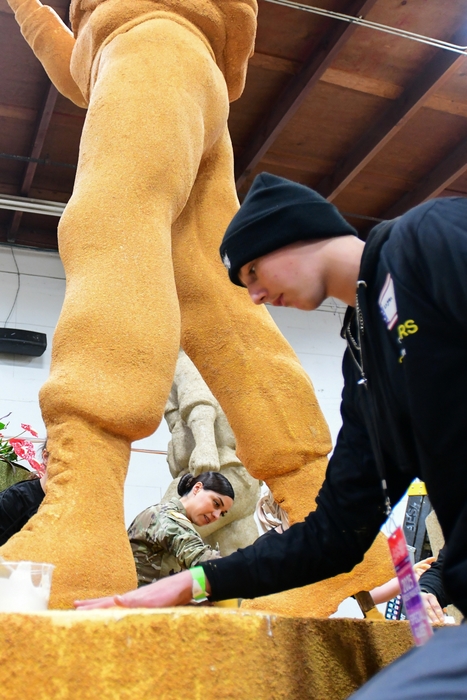
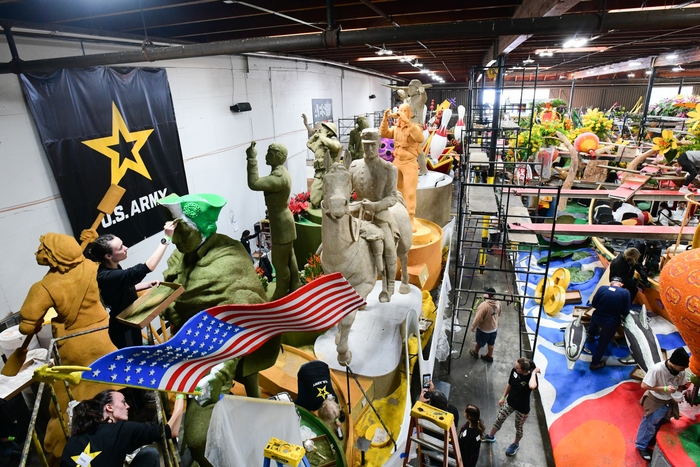
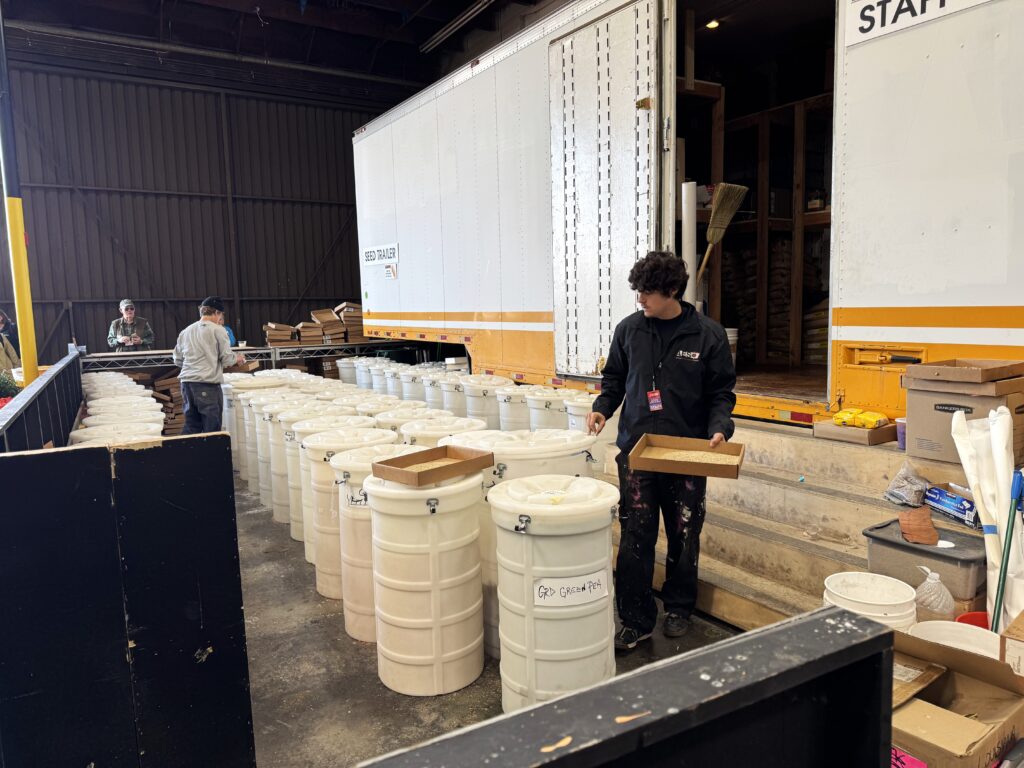
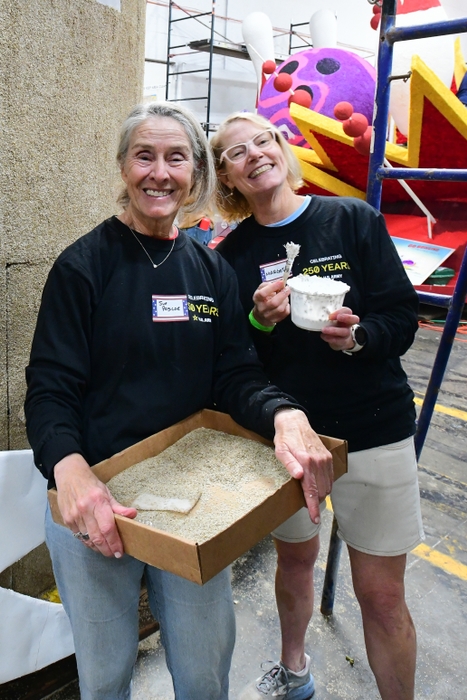
I don’t recall seeing the float at all. I watched the parade 3 times on Channel 5 – did it show up and I missed it or… There WAS an armed forces float that shot ‘missles’ – is that the one that was… ‘ours’? I used to love going to see the floats after the parade. The delicious aroma was almost intoxicating. Cheers and happy 2025. May it be a kinder and more rational year that it is expected to be.
‘Joy’ (R)
What do you expect form a network? Only station covers the whole parade: KTLA.